

On 15 August 1977, the Search for Extraterrestrial Intelligence received a 72-second narrowband radio signal. Its strength, recorded in alphanumeric characters, read "6-E-Q-U-J-5". While scientists could pinpoint its emission from the direction of Saggitarius, its true nature remains unknown.
DECODE 6EQUJ5 is a new interpretation of the enigmatic code in the form of an installation that fuses an aesthetic vision with computation. It draws upon a meticulously selected catalog of 1,679 extrasolar planets that have been discovered orbiting stars in the Sun’s galactic vicinity. Each planet fills in one element of the 23x73 signal grid. Collectively, they provide a cryptographic key that will unlock a deep encoded message when all of the non-fungible tokens linked to the planets have been acquired.
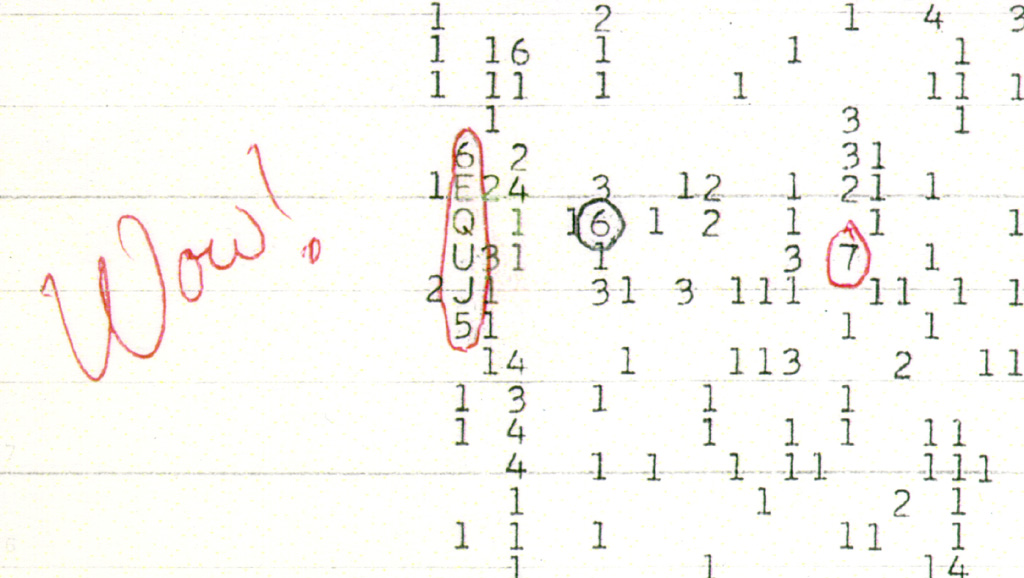
DECODE 6EQUJ5 comprises 1,679 distinct digital tokens --- each represents an actual alien planet orbiting a star in our galaxy. The tokens are generated with a finely tuned algorithm, and each is entirely unique, just like the world that it represents.
The installation rests on a flight of realization: only now that the outlines of the galactic planetary census are reified can we properly translate the radio signal. As if signaling Earth through encoded pulses, a certain fraction of planets transit (pass directly in front of) their star along their orbits. Every transiting planet, represented by a gold-colored conjunction calendar, sets one element of the signal grid to "on" (white). The remaining planets, represented by a silver-colored conjunction calendar, set elements to "off" (black).Each token graphically encodes the planet's discovery, orbit, and purpose in translating the radio signal. Below is a sample token.


The most prominent feature on each token is a virtual "photograph" --- a digital window into the firmament, centered on the star that the planet orbits. The image precisely recreates what one would see peering through a telescope with the DECODE 6EQUJ5 aperture. Stars appear with extreme astrometric precision, and each diffraction spike spills its stellar light into the strange rectilinear orderings of Fourier space.

The algorithm that renders tokens uses data from the NASA Exoplanet Archive, which is operated by the California Institute of Technology, under contract with the National Aeronautics and Space Administration under the Exoplanet Exploration Program. The positions of stars are obtained from the European Space Agency's Gaia mission. The data was processed by the Gaia Data Processing and Analysis Consortium, funding for the which has been provided by national institutions, in particular the institutions participating in the Gaia Multilateral Agreement.
The secret message of DECODE 6EQUJ5 is embedded in the signal grid: a 23x73 array of elements. This arrangement is the same format as the Arecibo broadcast sent from Earth into outer space in 1974. DECODE 6EQUJ5 envisions the characters "6-E-Q-U-J-5" as a reply to the Arecibo message, and that it may only be understood in this representation.
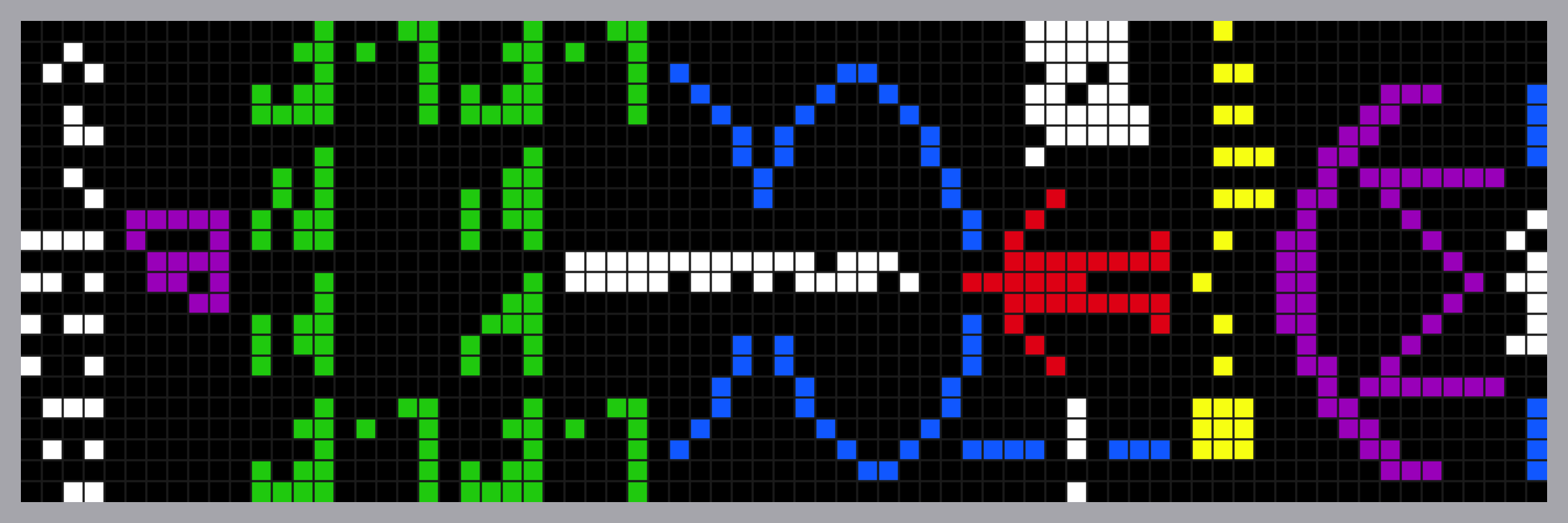
As each token is acquired, its corresponding signal grid element is updated --- turned on or off, depending on the planet. Over time, the signal grid fills in. The installation's evolution is illustrated below. The initial values, however, have been randomized.
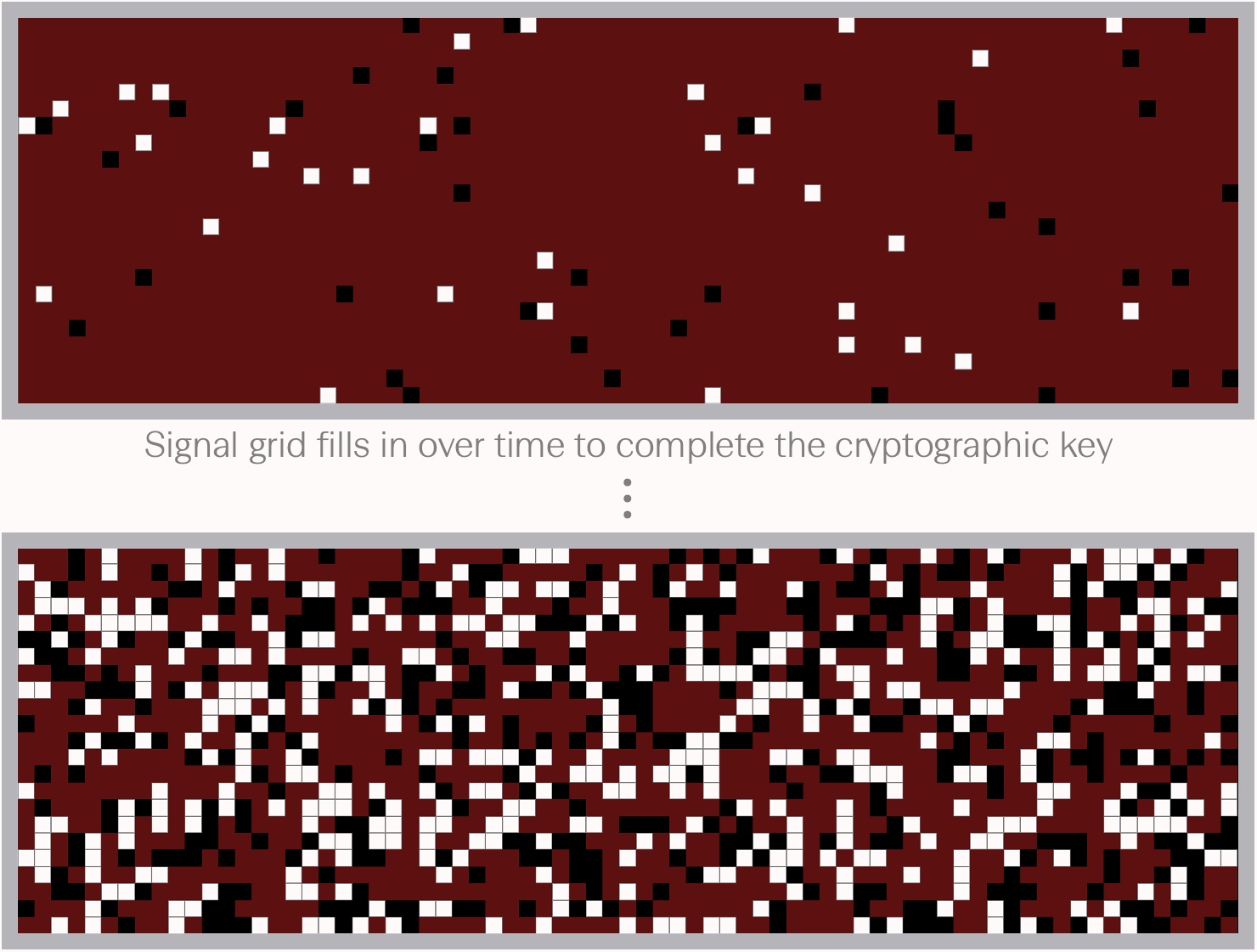
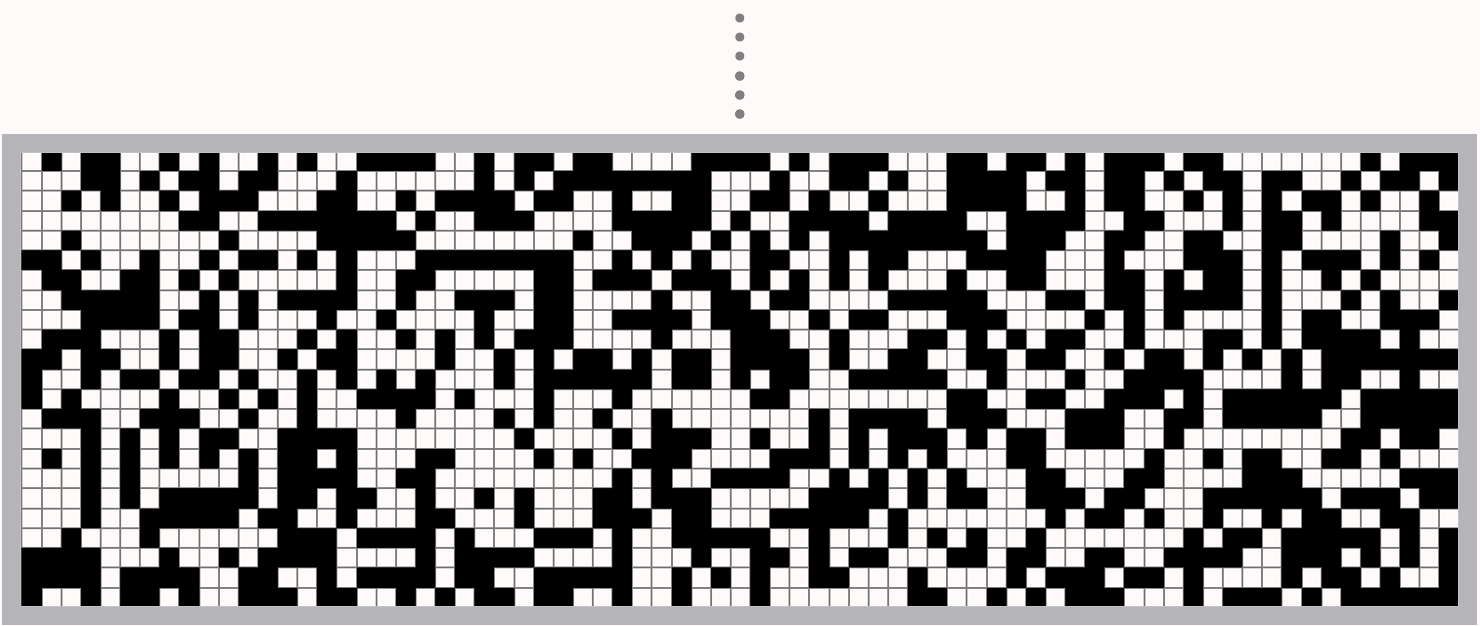
The completed grid is the cryptographic key. Next, an "XOR" bit operation is performed between the cryptographic key and a digital representation of the characters "6-E-Q-U-J-5".
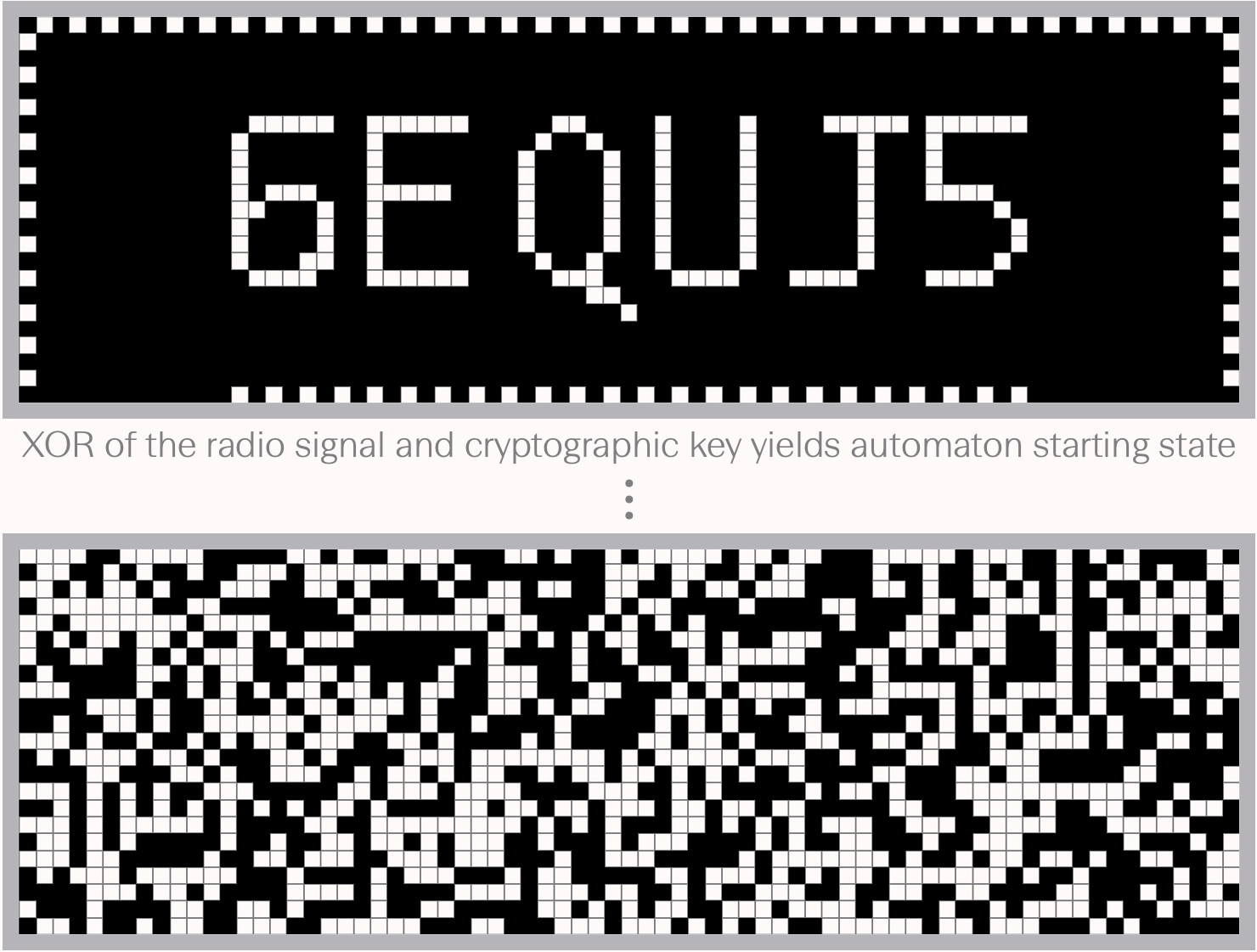
After the XOR operation, the signal grid is given to the automaton --- a digital machine capable of storing and processing information. The automaton evolves in a series of 501 steps, corresponding to the number of days the 6EQUJ5 transmission would have required to reach Earth, had it been sent in immediate reply to the Arecibo message. The top row and left column of the signal grid remain constant while the automaton reverses the encryption. When the automaton finishes, the message is revealed.
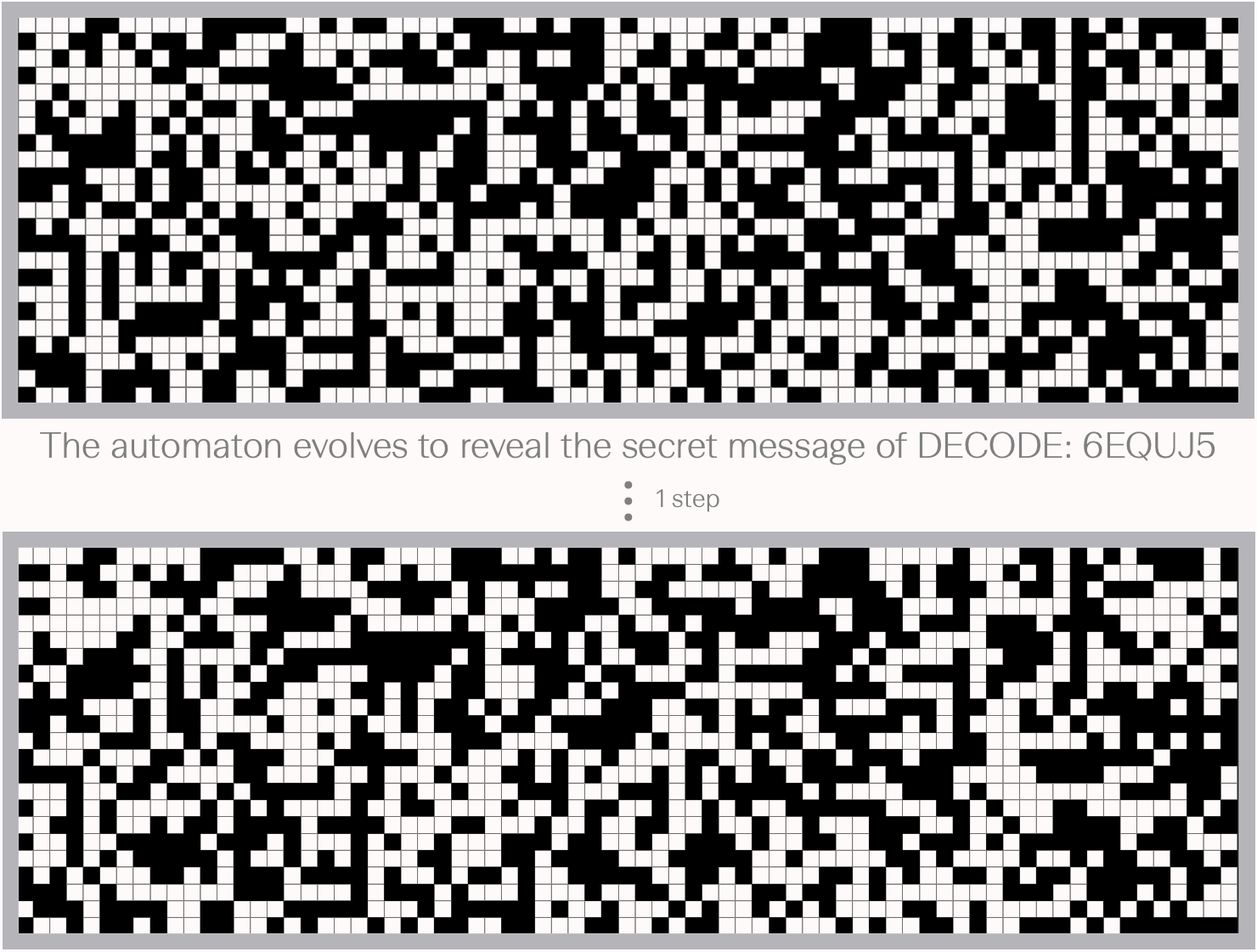
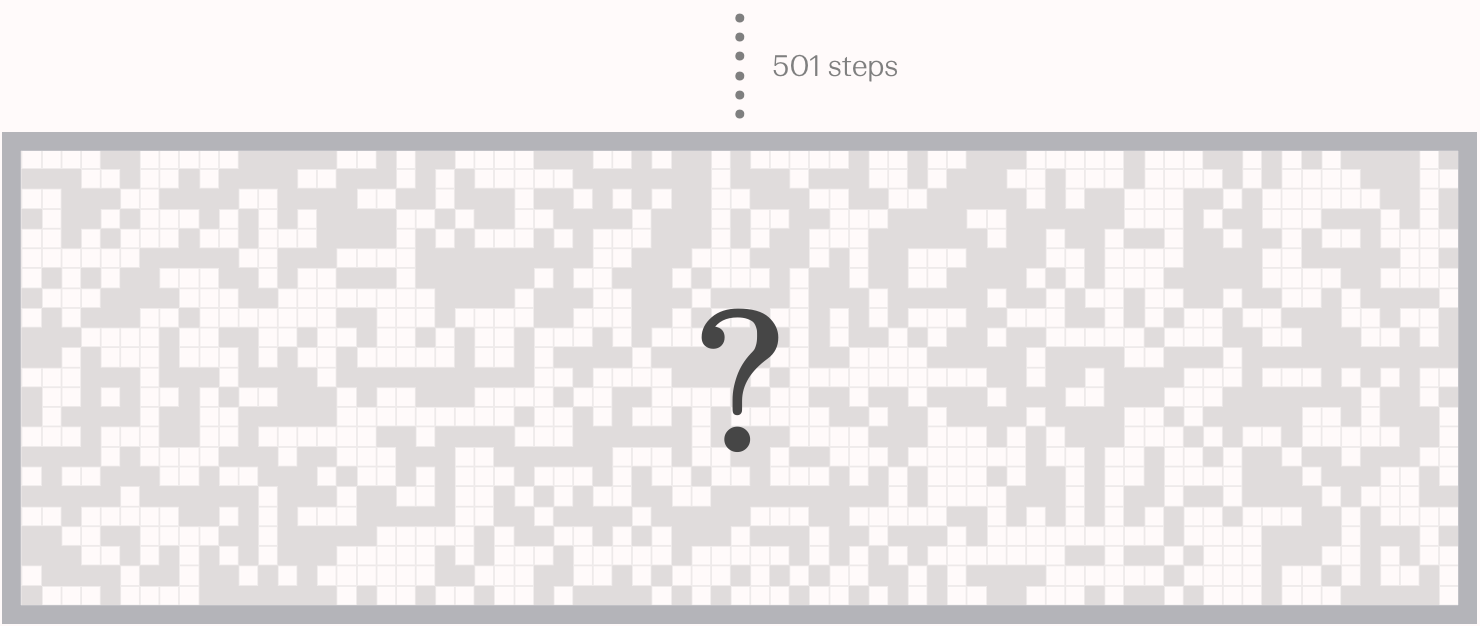
The automaton follows an update rule that makes it "universal": if given a sufficiently large grid, it can perform the same logical operations that a real computer can. At the same time, it conserves the total number of 1's and 0's, analogous to conservation of the number of particles in a physical system. The apparent motion of dark pixels within the grid extends the analogy to the kinetic energy of a system, while stationary blocks act as a form of potential energy.

For DECODE 6EQUJ5, the automaton serves as a specific means of encryption and decrpytion. More generally, the tenets of digital physics posit that universal cellular automata can deterministically generate entire Universes.